 Java
Java javaTutorial
javaTutorial In-depth understanding of the Java framework technology stack: explore common Java frameworks such as Spring MVC, Hibernate, MyBatis, etc.
In-depth understanding of the Java framework technology stack: explore common Java frameworks such as Spring MVC, Hibernate, MyBatis, etc.
Java framework technology stack: Introducing commonly used Java frameworks, such as Spring MVC, Hibernate, MyBatis, etc.
With the continuous development of Java, more and more frameworks Developed to simplify the development process. Among them, Spring MVC, Hibernate, MyBatis, etc. are one of the most commonly used frameworks in Java development. This article will introduce the basic concepts and usage of these frameworks to help readers better understand and apply these frameworks.
First, let’s introduce the Spring MVC framework. Spring MVC is part of the Spring Framework and is a Web framework based on the MVC (Model-View-Controller) pattern. It provides a flexible, lightweight way to develop web applications. The core components of Spring MVC include Controller, View and Model. The controller is responsible for receiving and processing requests from the front-end page, and returning the processing results to the view to display to the user. A view is usually an HTML page used to present data to the user. The model is the core of business logic processing and data operations. It is responsible for processing business logic and data addition, deletion, modification and query operations. The Spring MVC framework also provides some other functions, such as data verification, file upload, etc. Using Spring MVC, developers can quickly build an efficient and reliable web application.
Second, let’s introduce the Hibernate framework. Hibernate is an open source object-relational mapping (ORM) framework that maps Java objects in applications to database tables. Using Hibernate, developers can operate the database in an object-oriented manner without having to worry about the underlying SQL statements of the database. Hibernate provides a series of annotations and configuration files for specifying the mapping relationship between Java objects and database tables. Through these mapping relationships, Hibernate can automatically generate corresponding SQL statements and perform database addition, deletion, modification and query operations. Hibernate also provides some advanced features, such as caching, transaction management, etc., to improve performance and data consistency. Using Hibernate, developers can focus more on the development of business logic without caring about the underlying database operations.
Third, let’s introduce the MyBatis framework. MyBatis is an excellent persistence layer framework that separates the writing of database operations and SQL statements from the writing of Java code. MyBatis uses XML or annotations to configure the mapping relationship between SQL statements and results. Developers can flexibly write and adjust SQL statements to meet different needs. The bottom layer of MyBatis encapsulates the operation details of JDBC and makes database operations easier by providing a simple interface. In addition, MyBatis also supports advanced features such as dynamic SQL, caching, and transaction management to enhance development efficiency and system performance. Compared with Hibernate, MyBatis is more lightweight and suitable for projects that have more fine-grained control over database operations.
In summary, Spring MVC, Hibernate, and MyBatis are commonly used frameworks in Java development. Spring MVC can help developers quickly build an efficient and reliable web application; Hibernate can simplify database operations, allowing developers to focus more on business logic development; MyBatis can separate SQL statements and Java code, making database operations more efficient. Flexible and convenient. Choosing a suitable framework will have an important impact on the development efficiency and performance of the project. It also needs to be selected based on specific needs and the experience of the development team. It is crucial for Java developers to master the basic concepts and usage of these frameworks. I hope this article will help readers understand and apply Spring MVC, Hibernate, MyBatis and other frameworks.
The above is the detailed content of In-depth understanding of the Java framework technology stack: explore common Java frameworks such as Spring MVC, Hibernate, MyBatis, etc.. For more information, please follow other related articles on the PHP Chinese website!
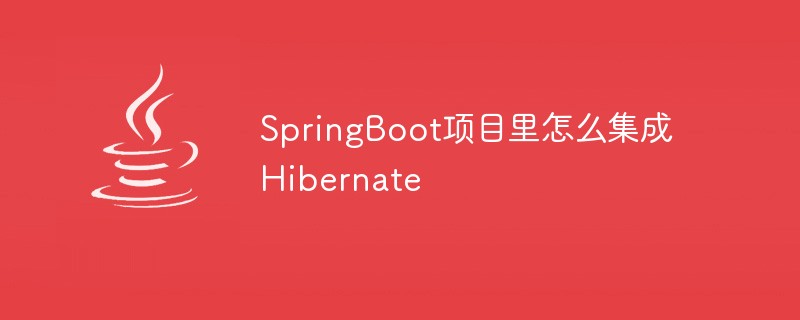 SpringBoot项目里怎么集成HibernateMay 18, 2023 am 09:49 AM
SpringBoot项目里怎么集成HibernateMay 18, 2023 am 09:49 AM在SpringBoot项目中集成Hibernate前言Hibernate是一个流行的ORM(对象关系映射)框架,它可以将Java对象映射到数据库表,从而方便地进行持久化操作。在SpringBoot项目中,集成Hibernate可以帮助我们更轻松地进行数据库操作,本文将介绍如何在SpringBoot项目中集成Hibernate,并提供相应的示例。1.引入依赖在pom.xml文件中引入以下依赖:org.springframework.bootspring-boot-starter-data-jpam
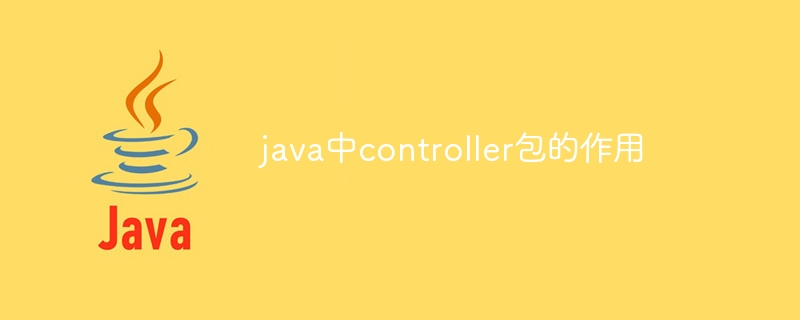 java中controller包的作用May 07, 2024 am 02:45 AM
java中controller包的作用May 07, 2024 am 02:45 AMSpring MVC 架构中,Controller 包通过处理用户请求并返回响应实现业务逻辑,职责包括:接收用户请求(通常通过 HTTP)。验证和处理请求参数。调用适当的业务逻辑(通常是服务层)。渲染视图并返回给用户(通常是 HTML、JSON 或 XML)。
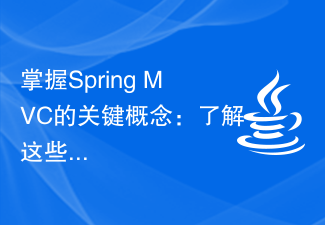 掌握Spring MVC的关键概念:了解这些重要特性Dec 29, 2023 am 09:14 AM
掌握Spring MVC的关键概念:了解这些重要特性Dec 29, 2023 am 09:14 AM了解SpringMVC的关键特性:掌握这些重要的概念,需要具体代码示例SpringMVC是一种基于Java的Web应用开发框架,它通过模型-视图-控制器(MVC)的架构模式来帮助开发人员构建灵活可扩展的Web应用程序。了解和掌握SpringMVC的关键特性将使我们能够更加有效地开发和管理我们的Web应用程序。本文将介绍一些SpringMVC的重要概念
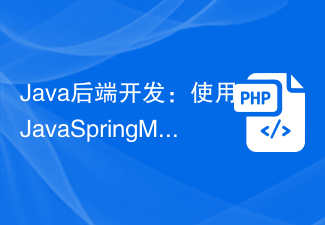 Java后端开发:使用Java Spring MVC进行API MVC框架开发Jun 17, 2023 am 10:27 AM
Java后端开发:使用Java Spring MVC进行API MVC框架开发Jun 17, 2023 am 10:27 AMJava后端开发是一种非常重要的技术,它是现代互联网应用程序的核心。Java后端开发主要涉及APIMVC框架开发。在这篇文章中,我将介绍如何使用JavaSpringMVC进行APIMVC框架开发。JavaSpringMVC是一个非常强大的开源框架,它主要用于Web应用程序的开发。它使用了MVC(Model-View-Controller)的架构模
 JAX-RS 与 Spring MVC:一场 RESTful 巨头的较量Feb 29, 2024 pm 05:16 PM
JAX-RS 与 Spring MVC:一场 RESTful 巨头的较量Feb 29, 2024 pm 05:16 PM简介RESTfulapi已经成为现代WEB应用程序中不可或缺的一部分。它们提供了一种标准化的方法来创建和使用Web服务,从而提高可移植性、可扩展性和易用性。在Java生态系统中,JAX-RS和springmvc是构建RESTfulAPI的两个最受欢迎的框架。本文将深入探讨这两种框架,比较它们的特性、优势和劣势,帮助您做出明智的决定。JAX-RS:JAX-RSAPIJAX-RS(JavaAPIforRESTfulWebServices)是由JavaEE开发的标准JAX-RSAPI,用于开发REST
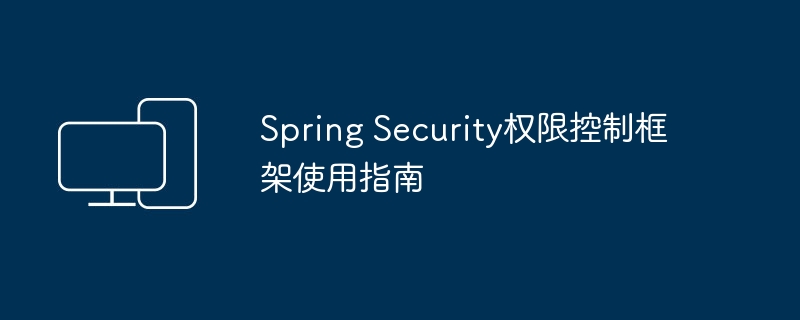 Spring Security权限控制框架使用指南Feb 18, 2024 pm 05:00 PM
Spring Security权限控制框架使用指南Feb 18, 2024 pm 05:00 PM在后台管理系统中,通常需要访问权限控制,以限制不同用户对接口的访问能力。如果用户缺乏特定权限,则无法访问某些接口。本文将用waynboot-mall项目举例,给大家介绍常见后管系统如何引入权限控制框架SpringSecurity。大纲如下:waynboot-mall项目地址:https://github.com/wayn111/waynboot-mall一、什么是SpringSecuritySpringSecurity是一个基于Spring框架的开源项目,旨在为Java应用程序提供强大和灵活的安
 Java错误:Hibernate错误,如何处理和避免Jun 25, 2023 am 09:09 AM
Java错误:Hibernate错误,如何处理和避免Jun 25, 2023 am 09:09 AMJava是一种面向对象编程语言,它被广泛地应用于软件开发领域。Hibernate是一种流行的Java持久化框架,它提供了一种简单且高效的方式来管理Java对象的持久化。然而,开发过程中经常会遇到Hibernate错误,这些错误可能会导致程序的异常终止或者不稳定。如何处理和避免Hibernate错误成为了Java开发者必须掌握的能力。本文将介绍一些常见的Hib
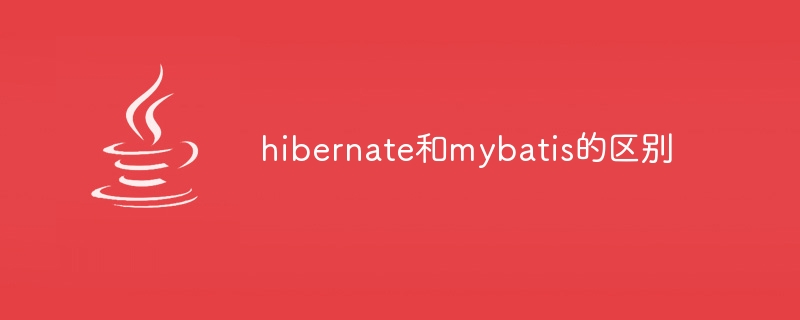 hibernate和mybatis有哪些区别Jan 03, 2024 pm 03:35 PM
hibernate和mybatis有哪些区别Jan 03, 2024 pm 03:35 PMhibernate和mybatis的区别:1、实现方式;2、性能;3、对象管理的对比;4、缓存机制。详细介绍:1、实现方式,Hibernate是一个完整的对象/关系映射解决方案,将对象与数据库表进行映射,MyBatis则需要开发者手动编写SQL语句以及ResultMap;2、性能,Hibernate在开发速度上可能比MyBatis快,因为Hibernate简化了DAO层等等。


Hot AI Tools

Undresser.AI Undress
AI-powered app for creating realistic nude photos

AI Clothes Remover
Online AI tool for removing clothes from photos.

Undress AI Tool
Undress images for free

Clothoff.io
AI clothes remover

AI Hentai Generator
Generate AI Hentai for free.

Hot Article

Hot Tools

mPDF
mPDF is a PHP library that can generate PDF files from UTF-8 encoded HTML. The original author, Ian Back, wrote mPDF to output PDF files "on the fly" from his website and handle different languages. It is slower than original scripts like HTML2FPDF and produces larger files when using Unicode fonts, but supports CSS styles etc. and has a lot of enhancements. Supports almost all languages, including RTL (Arabic and Hebrew) and CJK (Chinese, Japanese and Korean). Supports nested block-level elements (such as P, DIV),

ZendStudio 13.5.1 Mac
Powerful PHP integrated development environment

Zend Studio 13.0.1
Powerful PHP integrated development environment

SublimeText3 Chinese version
Chinese version, very easy to use

Safe Exam Browser
Safe Exam Browser is a secure browser environment for taking online exams securely. This software turns any computer into a secure workstation. It controls access to any utility and prevents students from using unauthorized resources.





